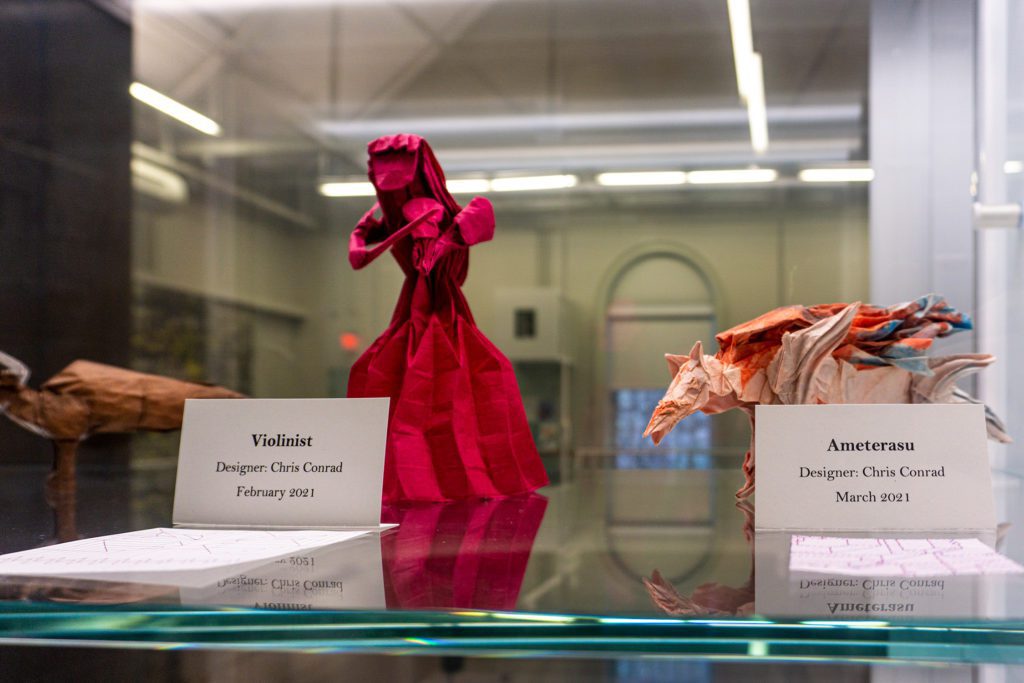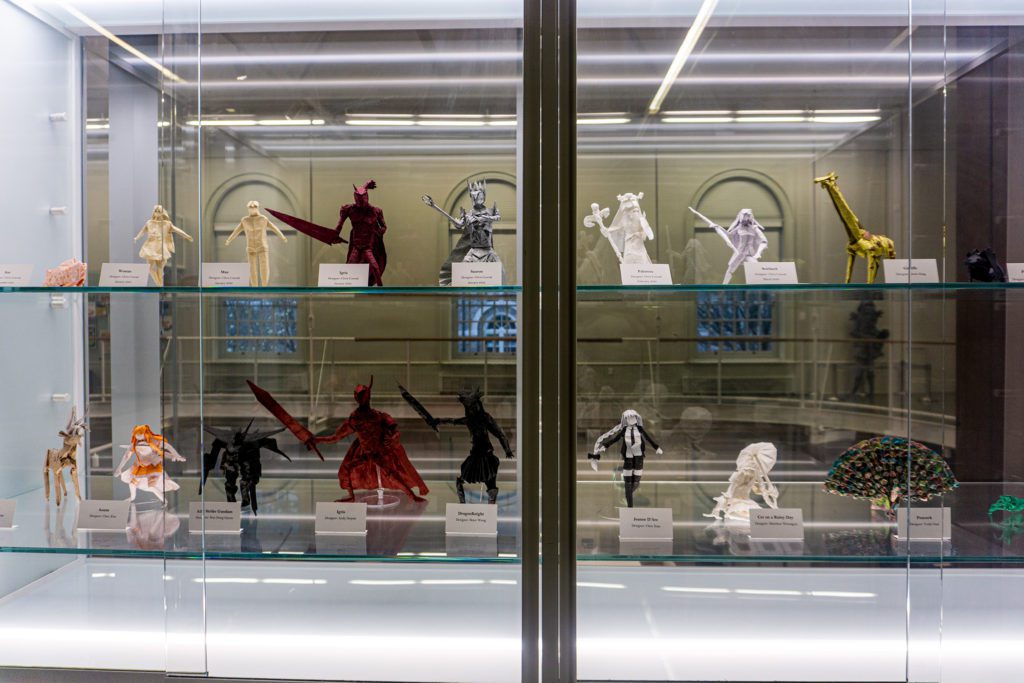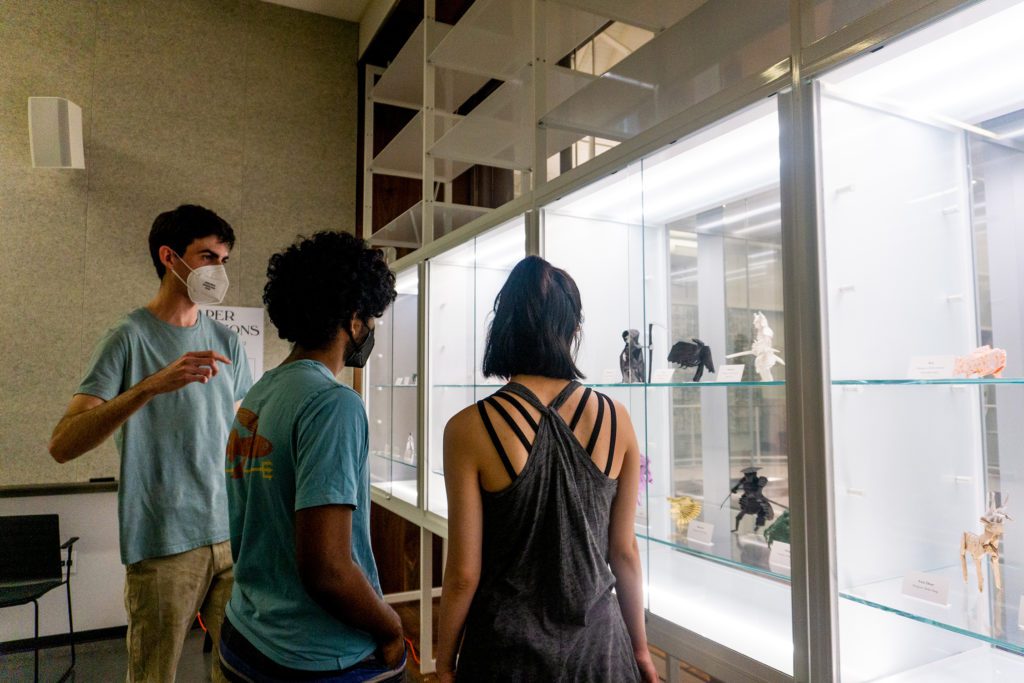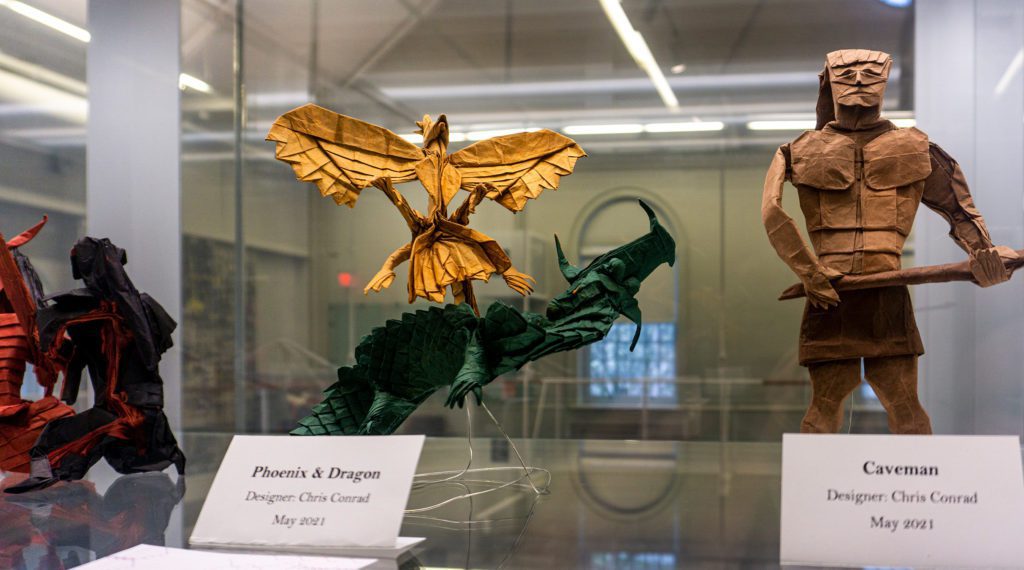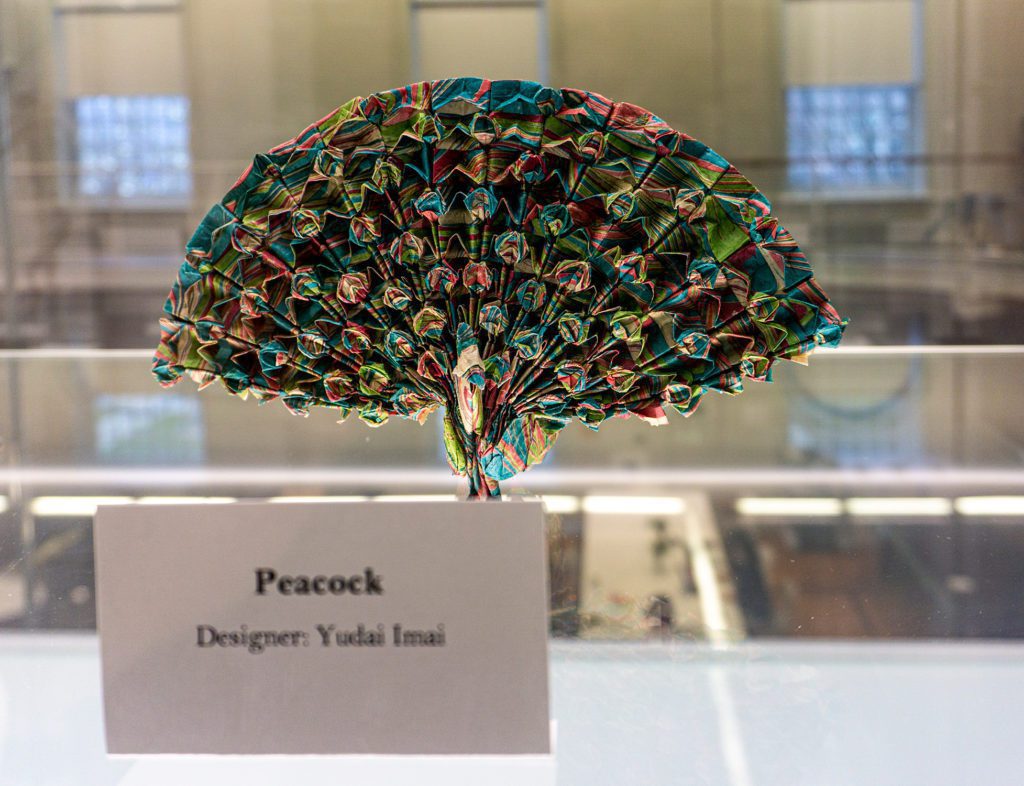Mysterious beings have inhabited VCAM. A zebra dons its stripes. A stone golem flaunts its muscular chest. An ancient dragon flaunts its wings. A violinist bows her instrument. A six-foot armored man guards the Upper Create Space. All of these figures were made simply by folding paper. Chris Conrad’s new exhibit, Paper Meditations, features a collection of his origami work, including some original pieces he designed himself. Each piece in the exhibit was folded from one uncut square of paper. Paper Meditations, which opened on April 8 in the VCAM 201 Display Cases, is on view until May 8.
The senior political science major first became interested in the Japanese art of paper folding in middle school. During the pandemic, he spent time practicing his folding and improved his skills enough to begin completing more complex subjects. By the fall of 2020, he had mastered origami enough to try his hand at designing his own works. “The learning curve was really steep—and I’m still learning!—but I’m really happy I’ve moved more towards creating original pieces,” he said.
With advanced folding skills and a collection of 46 works in his inventory, Conrad searched for ways to display his art. Henry Morales, the Hurford Center post-bac fellow, encouraged him to apply to the Student Arts Fund, which he did. Once his proposal was accepted, Conrad used the funding to buy materials to create the life-size human figure, the 47th piece of the exhibit, which stands near VCAM’s Upper Create Space. He then got to work curating his collection for the exhibit in VCAM. The pieces in the display case were created in 2020 and 2021, and were arranged in the space methodically. “A few days before the exhibit opened, I had an idea right before falling asleep to rearrange the exhibit so that underneath each original piece, I would place one non-original piece that inspired my design,” Conrad explained.
Creating these pieces was an extensive process. For each piece, the folding paper must be made by mixing methylcellulose powder with water and one to three sheets of tissue paper. Many of the smaller pieces were designed by other artists, and Conrad used the crease patterns provided in the instructions to fold. “Crease patterns are images which show the square with all the major creases within a model, the idea being that if you have all those creases folded simultaneously, you’ll have the “base” for a model,” he explained. Once the base is set, the final steps of folding and gluing—a process referred to as “shaping”—give the piece its signature look. Folding the smaller pieces typically took between four and 20 hours, depending on the complexity of the model.

Original works, of course, required more time, as Conrad had to design the piece from scratch. “My design process involves first representing the subject I want to create as a stick figure (called a “tree”) with rough guesses of how long each stick should be to create the right proportions,” he said. “Then, I spend a bunch of time trying to “pack” each stick (typically called a “flap”) into the starting square. This process of “packing” flaps into the square typically takes the longest amount of time.” Conrad routinely test-folded his model and adjusted his original crease patterns until satisfaction.

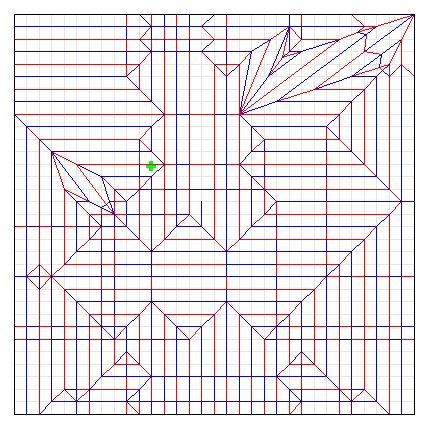
The human-sized figure, Dragon Tamer, is an original work—in fact, it’s the largest origami piece Conrad has ever created. The piece required hours of paper preparation—the entire piece was created with a 19’ x 19’ square of paper—along with about 45 hours of folding. “When shaping the model, I relied less on glue than usual, as gluing the whole model would have taken far too long,” Conrad explained. “Instead, I diluted my glue in water, brushed it onto large pieces of aluminum foil, and glued the foil into the model, which let me use foil’s natural tendency to hold its shape to hold the layers of the model together. At the very end, I put the model on a lamp (with lightbulbs removed), which supports the weight of the finished piece.”
Conrad is thankful for all the support he’s received from the Hurford Center staff, friends that helped him with the work, and origami designers that inspired his original pieces. “Ilana Panth BMC ’22 helped me create the giant 19×19 foot sheet of paper for the Dragon Tamer and do some of the initial folding,” he said. “Bodo Haag and Drew Heskett helped me with parts of the Dragon Tamer design. I’d also like to thank Boice Wong, Brandon Wong, Juho Könkkölä, and all the other origami artists who have had a minor or major impact on my development as an artist.”
Origami has provided Conrad with an enjoyable, relaxing activity, as well a skillful challenge to work at every day. He hopes that Paper Meditations will inspire others to give the artform a try. “I would definitely recommend the art form to others!” he said. “Simple origami is really fun and relaxing. It takes a while to climb the complexity ladder, but it’s a really satisfying journey.”

